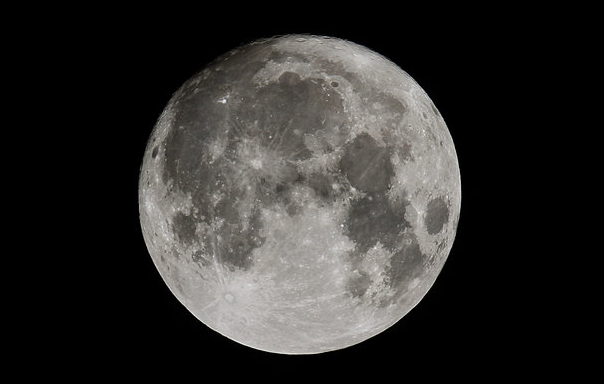It takes more than a single photograph to capture the effect of a so-called “Supermoon”. The orb itself, viewed alone without any surrounding scenery, is huge and brilliantly tinged with perhaps a bit of orange. Whether that’s caused by smog, moisture, or atmospheric refraction is a good question.
But certainly, the Supermoon last Sunday and Monday came as close to Earth as our satellite ever gets – 221,000 miles away instead of its normal distance of 238,000. That’s 8% or 17,000 miles closer. Travelling 17,000 miles on Earth would take you from Boston to the North Pole and then down the Pacific side of the globe all the way to the South Pole.
The reason for the Supermoon coming close to Earth is simple – all orbits in space are elliptical – slightly “egg-shaped” in other words. As the Earth orbits the sun, the moon comes closer now and then, when the gravity of both Earth and Sun affect it together and when it is on the shortest segment of its egg-shaped orbit.
Maybe an image of the Supermoon last Sunday and Monday hovering over Pleasure Bay at very high tide will show just how super a Supermoon really is. You’ll see some atmospheric refraction around it, for which you’ll have to forgive South Boston Online – we don’t have astronomical photography equipment.
The last Supermoon occurred in 1948. That was the year that Harry Truman (D) upset Thomas E. Dewey (R) in the Presidential election. That was also the year that the Cleveland Indians beat the Boston Red Sox in the first pennant playoff game ever, and then went on to take the World Series from the (then) Boston Braves in six games.
Well, the Indians couldn’t win the World Series this time around, although they came awfully close. And in this year’s Presidential Election, the Republican beat the Democrat. Do you suppose the Supermoon has some kind of influence over these happenings? No matter! The next Supermoon is just 18 years away in 2034. Then, we’ll see.






